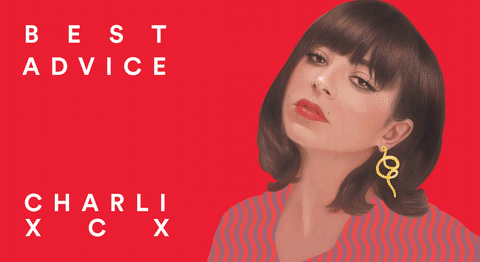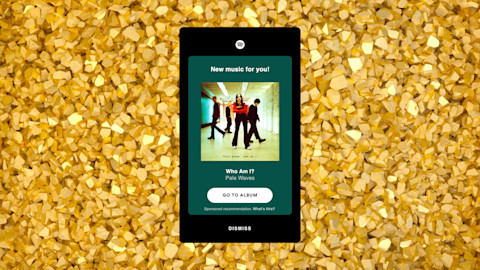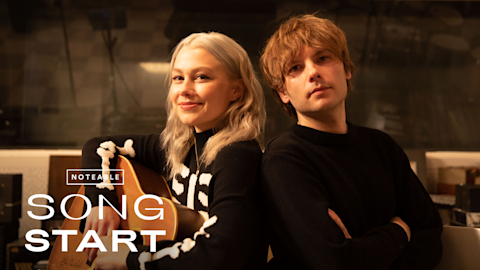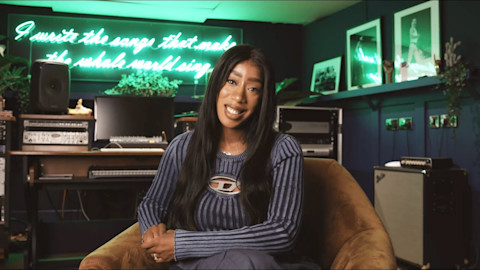One of the great advantages of being a working artist today is the opportunity you have to control many of the business aspects of your career. Regardless of whether you find this to be a headache-inducing burden or a self-empowering privilege, it’s important that you master a vocabulary you may encounter as you create music, protect your art, and build a viable career. In this ongoing series we hope to help empower you by defining important terms in a given area of the music business.
Today we’re talking distribution—namely, the mechanics of how your music finds its way to the consumer, and in order to paint a more complete picture we’ll touch on some music-business context and history as we go.
Distro lingo.
These are the concepts and terms you’ll need to understand to get your music, whether physically or digitally, into the hands—well, ears—of the listener.
Distributor: A distributor is a third party that gets a product from the manufacturer to a retailer, whether virtual or actual.
Major Distributor: When physical media was the only way to buy and sell music, the major labels developed their own distribution channels to move product to where people could consume it. Now that digital download and streaming platforms make up so much of the music business, the majors have their own digital-distribution arms as well. Because of their scale the major distributors can call on broad marketing resources and strong global relationships that often help break songs and artists internationally.
Independent Distributor: Similar to the big networks mentioned above, an independent distributor works the repertoire of any number of small and medium-sized labels. Redeye and Secretly Distribution are two examples. Somewhat confusingly, many independent music distributors—such as Caroline, The Orchard, and Alternative Distribution Alliance (ADA)—are owned by major labels (Universal Music Group, Sony Music Entertainment, and Warner Music Group, respectively). This arrangement allows the independent label to take advantage of centralized resources while having the creative freedom to focus on their own repertoire.
Artist Distributor: Aggregators and distributors are terms that are sometimes used interchangeably, but ostensibly a kind of middleman that can be used by artists to deliver their music to Spotify, other DSPs, and stores. While this solution is perfect for artists who are just starting their careers, it is not uncommon for a well-known artist or even an independent label to have digital distribution through an aggregator like DistroKid or EmuBands. CD Baby is a hybrid company that offers digital distribution while also facilitating the manufacture of physical music formats.
One-Stop: A company that buys physical product wholesale from distributors and resells it in small quantities to small retail stores. Rare, but not totally extinct today.
Rack Jobber: A company that rents shelf or rack space within a physical retail location in order to sell their own stock which they buy wholesale. CDs sold in gas stations, bookstores, or gift shops, for instance, are often the work of a rack jobber.
Licensees: A third party that purchases the ability (license) to manufacture, market and distribute all or part of a rights holder’s repertoire. For instance, a third-party licensee may purchase the rights to the UK version of an album owned by a US artist or label. This also applies to digital music releases, despite the fact that the web is, well, worldwide.
Prepping your music.
When you’re preparing your music for distribution, you’ll have a different set of considerations and terminology to navigate. Here are some key words you’ll want to understand in your contract, and in negotiations and planning.
FLAC File: Another uncompressed audio format that digital distributors often accept is the Free Lossless Audio Codec. (Technical heads up: Audio should be 16-bit or 24-bit 2-channel with a 44.1kHz or higher sample rate. 32-bit or higher audio bit depth is not supported.)
WAV File: If you’ve ever recorded with multitrack software, you probably know that the music gets written to your computer in an uncompressed file format, usually Waveform Audio (.wav). Because .wav files are superior in audio quality to “lossy” file formats, such as .mp3, you will be required to use .wav files anytime you upload your music to a digital service, either through an aggregator or distributor, or directly to the digital store itself.
High-Resolution Art: For digital distribution you must provide a “hi-res” cover-art file that is a perfect square of at least 1600 x 1600 pixels (in a TIFF, PNG or JPEG) at a resolution of at least 72 dpi . Other standards do apply for digital cover art, usually imposed by the stores and enforced by distributors, such as what can and can’t be written on it. Check with your distributor for policy details, and know that if your cover art is an advertisement for a better mattress it will probably be rejected.
Label Copy: A collection of information that accompanies a musical work, including artist name, song title, ISRC, composer, publisher, and rights holder. Without this information it is impossible to distribute royalties properly. To see an example, you can look on a CD booklet or LP sleeve. In digital music, the label copy is contained within what’s known as metadata.
Metadata: This is where all the liner-notes information about a digital file lives, including what’s readily visible on an album or track web page (such as the track, album, and artist names) as well as the back-end database info that can often be found with a click or two (the year the song or album was released, the label, the producer, etc.). Getting this information right when music is first uploaded is crucial, since it’s what is used for accounting and is the only hope for getting royalties properly distributed for online music use. For a deeper dive on metadata you can this Spotify For Artists blog post.
P Line: In copyright law, the P Line is specific to musical works (the P stands for “phonogram”) and is represented by ℗. The purpose of this symbol is to indicate that legal rights are held for a sound recording and to identify the owner of those rights. You may have seen this printed on an LP sleeve or CD booklet accompanied by the year that the work was first released and the name of the owner of the sound recording. For digital music the P Line is included within the metadata associated with an audio file.
C Line: The © symbol, or C Line, is used to indicate copyright in a range of creative works other than sound recordings. In the context of music it is used to denote rights protection for the cover art or written material included within an album, like liner notes. It can also be used in relation to the underlying musical composition and lyrics. Because the P Line and C Line refer to different rights you will always see them written separately, even when the owner of the rights is the same.
ISRC: The International Standard Recording Code is a 12-14 digit alphanumeric code that identifies a specific recording of a song or composition; thus different remixes and cover versions of a song will have their own ISRCs. Typically a label or a digital artist distributor will assign ISRCs to your music, but in some cases you may need to provide your own. And because this “digital fingerprint” of your track should remain the same forever (regardless of who distributes your track now or who might distribute it in the future) please make sure that whoever issues your ISRC codes grants them to you in perpetuity.
UPC: A Universal Product Code is necessary to identify your product within a digital or physical store. Similar to an ISRC, it is a 12-14 digit alphanumeric code; however UPCs denote the album level and not the song level of your product. While one version of a song will always have the same ISRC, an album may have different UPCs depending on its format—the same album on LP, CD, and cassette will have three UPCs, while the digital version will require a fourth UPC. Again, if you are using a label or artist distributor, you may not necessarily need to sweat UPCs. But if you do need to provide your own you’ll need to consult the appropriate agency within your country. In the US, for instance, it is here, in Canada here, etc.
-Nate Baker






